The importance of growing your own sprouts cannot be stressed enough.
Sprouts and seedlings are an excellent source of vitamins and minerals for us, especially during the winter. While vegetables and salads come from greenhouses, are transported halfway around the world, and are relatively expensive, sprouts grow on our own window sills and can get to our plates while they’re still fresh, alive and nutrient-rich.
The Magic of Germination
Seeds carry everything they need to be able to grow into a plant; they “rest,” so to speak, as if they were hibernating.
With the help of moisture, oxygen, heat, and light, the enzymes in the seeds are activated and extensive biochemical processes are triggered, turning the seeds into one of the most vital foodstuffs of all:
- The water content multiplies.
- Enzyme activity increases.
- Phytic acids are largely broken down, and minerals bound by phytic acid are released
- Proteins are broken down into amino acids for better absorption (2).
- The amount of essential fatty acids increases.
- Complex carbohydrates (starch) are broken down into single and double sugars (3).
- Antioxidants increase (4).
- Lectins (certain antifeedants) are partially degraded (5).
- Vitamin content increases and vitamins form a bond with enzymes, making them easier to absorb for the body. Vitamins A, C, E, as well as the important B vitamins, (6) increase many times over, with some varieties increasing vitamin C by 600%.
- Likewise, minerals like calcium, magnesium, potassium, phosphorus, and zinc are bound to enzymes during the sprouting process, achieving higher bioavailability (7).
- Sprouted greens are rich in chlorophyll. Chlorophyll is blood-building, blood-purifying, and helps eliminate toxins and debris. Additionally, chlorophyll counteracts oxidative stress and thus protects cell health (8).
To summarize, the seeds are “pre-digested” by the germination process, which makes it easier for the nutrients to be absorbed by our body, and requires less energy expenditure.
Special importance should be given to the ENZYMES. They act as catalysts in our body, accelerating biochemical reactions and thus helping to detoxify the body, and prevent diseases and premature aging. And no other foods are as rich in enzymes as sprouts.
The Ann Wigmore Institute found that sprouts contain up to 100 times more enzymes than fresh vegetables. As we age, the human body produces fewer and fewer enzymes on its own, so sprouts are a great asset, especially for older people.
Enzymes are sensitive to heat and are destroyed above a temperature of 42º Celsius. This explains why fruits and vegetables are best eaten raw.
Growing your own sprouts is the gateway to self-sufficiency with living food from an indoor garden – there’s no other vegetable that’s more energy-saving, more toxin-free, more nutritious, and at the same time so inexpensive!

What’s particularly important for good germination are seeds of organic quality that are specifically meant for sprout cultivation. Seeds that are meant to be planted in the garden are usually chemically pretreated and not sufficiently germinable.
For the right container, we recommend jars and fine-mesh sieves made of stainless steel. This allows for hygienically clean sprout cultivation, and they can be cleaned really well again and again.

Growing Your Own Sprouts
For starters, red clover, broccoli, fenugreek, mung beans, or lentils are all great choices – they germinate easily and taste delicious.
This is How It Works:
Soaking:
Place 2 tablespoons of seeds in the germination jar, fill with fresh water, and allow to soak overnight – see table below for exact soaking times.
Rinsing:
After the soaking time, pour off the soaking water, rinse the seeds well, and place them at an angle in the storage rack. The jar should be in a bright place, at an evenly warm temperature. From here on out, rinse the seedlings 2 times a day.
Harvesting:
Before the sprouts are ready to be eaten or stored in the refrigerator, it’s recommended to “bathe” the sprouts in a water bath with a little apple cider vinegar or lemon juice (which has a disinfecting effect), collect the seed coats floating on top, and then drain them thoroughly in a sieve.
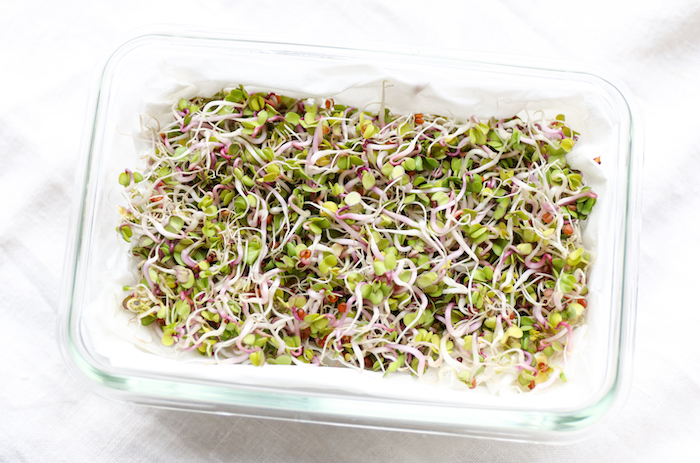
Hygiene Tips:
Use fresh and ideally filtered water and pay close attention to hygiene. If you have problems with mold, then mix 1 teaspoon of radish seeds with the sprouting seeds, since they have an antibacterial and germicidal effect.
Are you interested in gaining a comprehensive understanding of the health benefits of a plant-based diet? Download the curriculum for our Holistic Nutrition Coach training program.
Soaking and Germination Times for Different Seeds
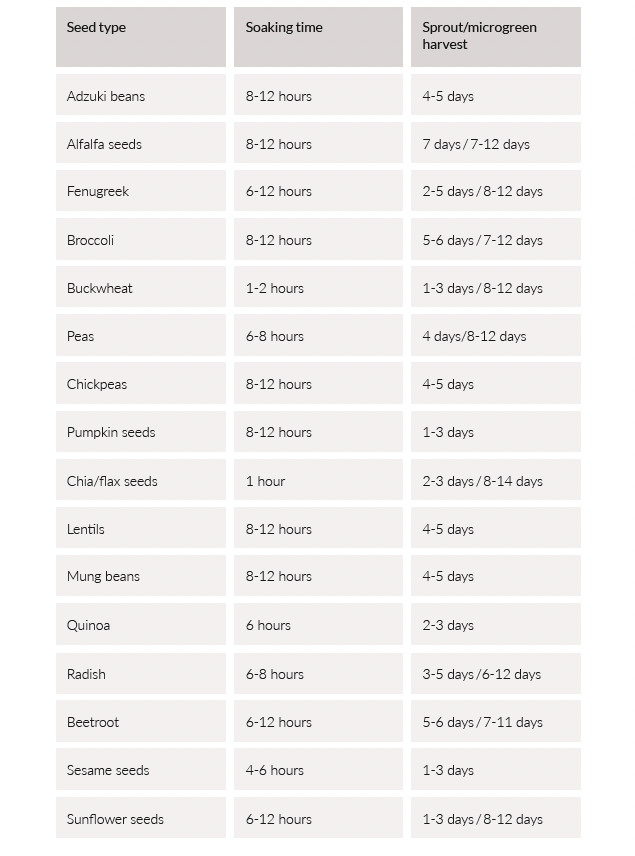
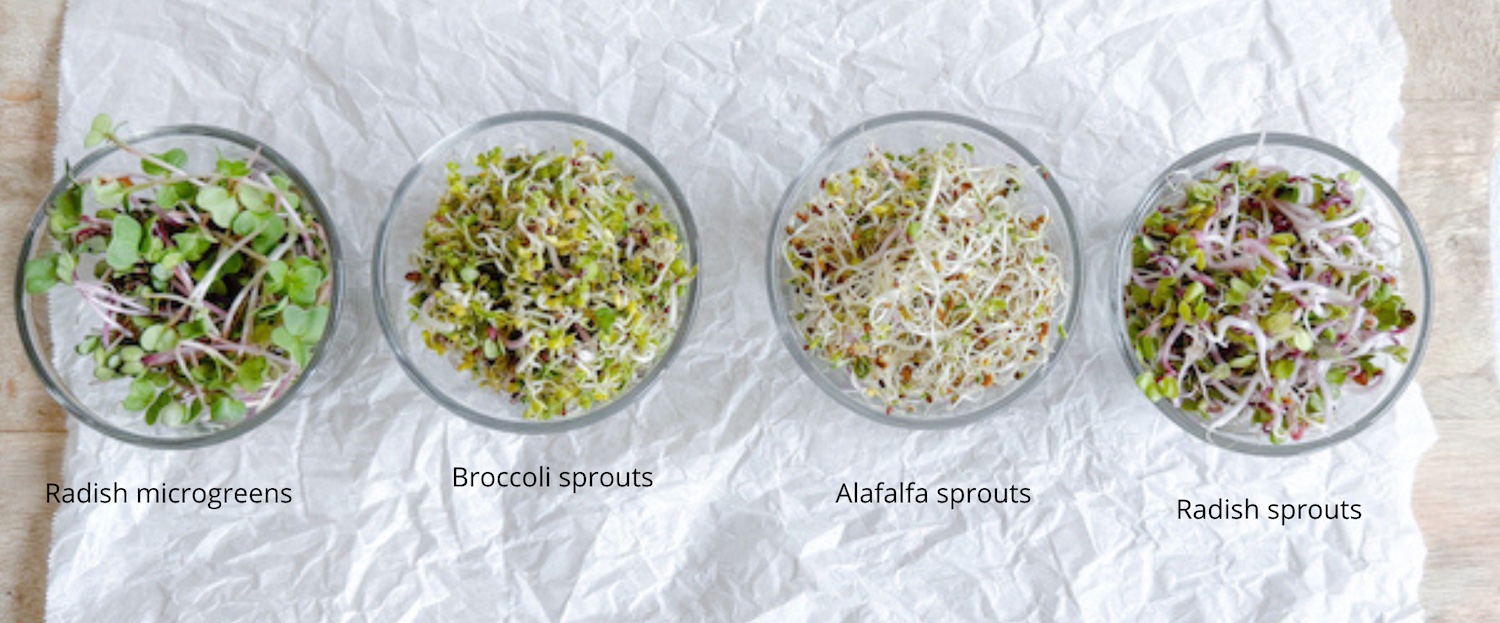
Don’t be Afraid of Mold When Growing Sprouts
If you’re having trouble with mold:
- Mix 1-2 teaspoons of radish seeds among your seeds (they have an antibacterial effect and provide a germ-free climate)
- Don’t keep the seeds too moist
- Avoid stagnant air
- Pay attention to hygiene
- Keep the temperature between 19º and 21º Celsius
Caution:
Do not confuse small white microfibers on the roots with mold. Mold tends to flake and smell musty.
Preparation:
You can use sprouts on just about any dish, and they can turn salads, bowls, wraps, sandwiches, soups, and more into nutrient-rich meals.
Sprouted buckwheat, sunflower, or flax seeds are the perfect ingredient for raw food breads, crunchy mueslis, or other crunchy snacks. For these, I soak larger quantities in a larger kitchen sieve.
Don’t Wait – Just Start:
- With sprout farming, we break the cycle of industrial food production. There’s no storage or transportation involved. Your home-grown sprouts are guaranteed not to be fertilized, not to be irradiated, and to land fresh and crunchy on your plate.
- Plants never again in their development have such a high concentration of valuable nutrients as they do in the sprouting phase.
- Sprouts are among the greatest sources of nutrients, protein, and enzymes!
- Freshly germinated sprouts are extremely digestible because enzyme inhibitors are mostly already broken down.
Excursus: Legumes
Sprouted legumes, for example lentils, mung beans, and especially chickpeas, can be challenging for some people’s digestive systems.
Why is this?
Legumes are High in Lectin
People who eat a plant-based diet typically include various lectins in their daily intake of food. While most of them are considered harmless, lectins from raw legumes in particular are known to be mildly toxic in the body (9).
Lectins are complex proteins that bind to cell membranes and can negatively affect digestive activity. Phasin, the collective name for certain lectins, is also often mentioned when discussing this topic.
We can remedy this issue by soaking the legumes overnight and allowing them to germinate for at least 4 days. But while this does reduce the lectin content, the lectins can only be completely deactivated through heat(10).
Depending on genetic disposition and health conditions, some people are particularly susceptible to the harmful effects of lectins (11). We therefore recommend finding out your personal tolerance and eating smaller quantities of germinated legumes, or blanching or cooking the germinated legumes before eating them.
Would you like to join our unique program, based on nutritional sciences and practice-oriented training for gaining a high level of health?
We’re more than happy to inform you about all that our training program offers on our website!

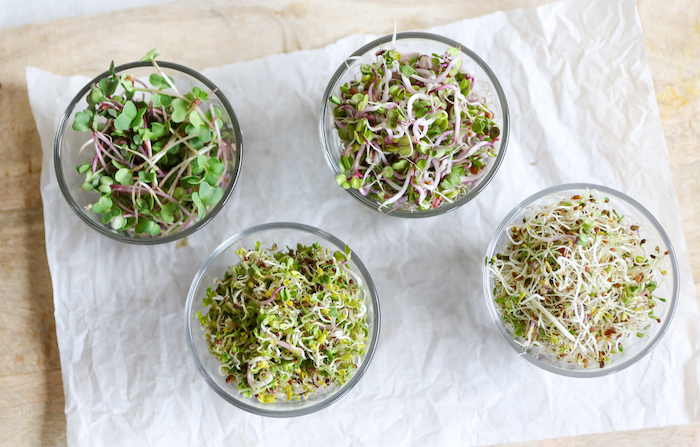


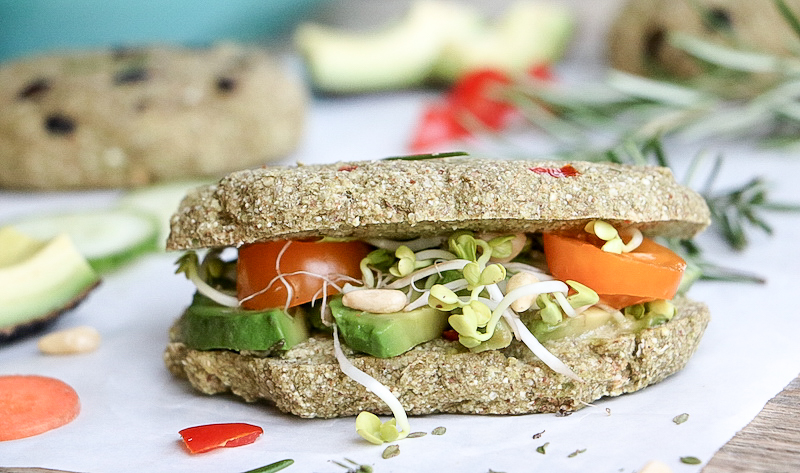
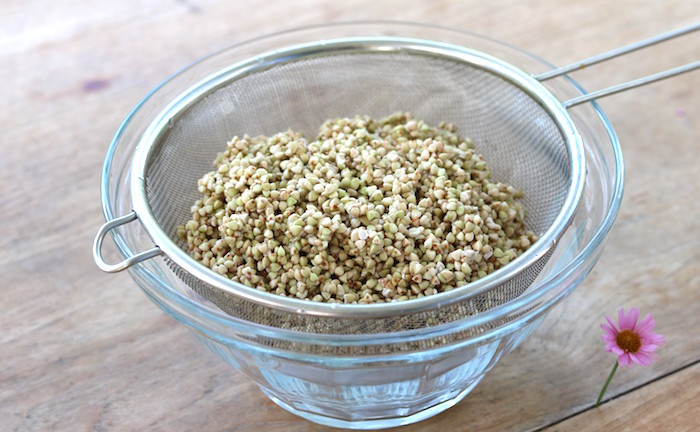


0 Comments